Preservation
A group of railfans from Bandung, Indonesia had recently started a program which is called 'Indonesian Railway Preservation Society' their main goal is to preserve what is left of Indonesia's railway glory days.
Since their existence are just a few months old, the only able to save a few things.
One of them (and the one who seems to have a significant progress) is a program to save Indonesia's first diesel locomotive: GE-Alco CC200 locomotive.
It is called 'Friends of CC200'.
At the moment, they're able to keep the remaining three of these locomotive (with some help from Indonesia State Railway's top brass), and planning to run them in the near future. Complete with some accompanying carriages.
Those carriages are, perhaps, the most luxurious train in Indonesia. It is called "Sultan Express". It has all the amenities of four-star hotel.
And those carriages turned out to be parked in Surabaya! So it was a good chance of getting closer with railway world in Surabaya. and not just that, I also saw one Madurese Royal Train too!
And I was lucky enough to be involved in such program, which involve my childhood hobby.
Also, some of the photos in this gallery might not be about preservation, but it is about what could have been preserved. And there are also some photos from Ambarawa Rail Museum which had a large collection of steam locos, either in static condition, or those whose are used for tourist train.
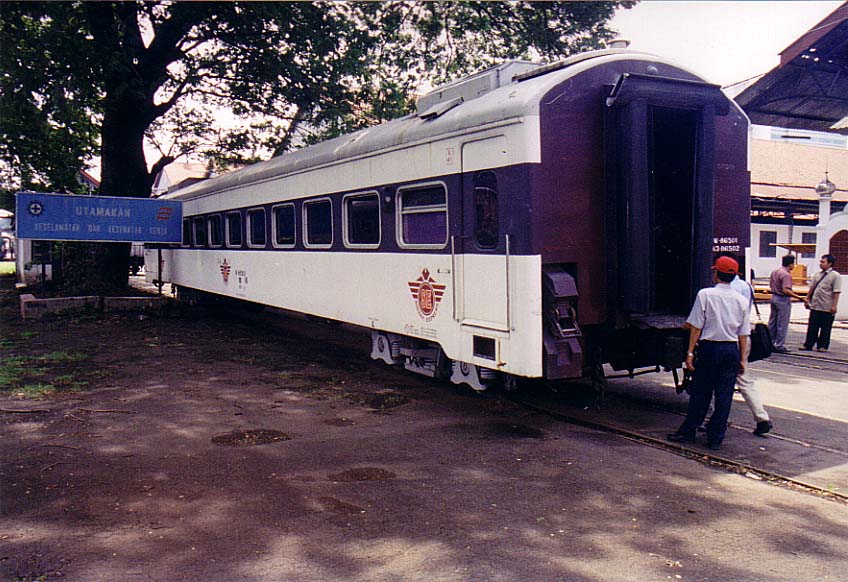 |
Side view of 'Sultan Express' dining car in Gubeng Railway Workshop. |
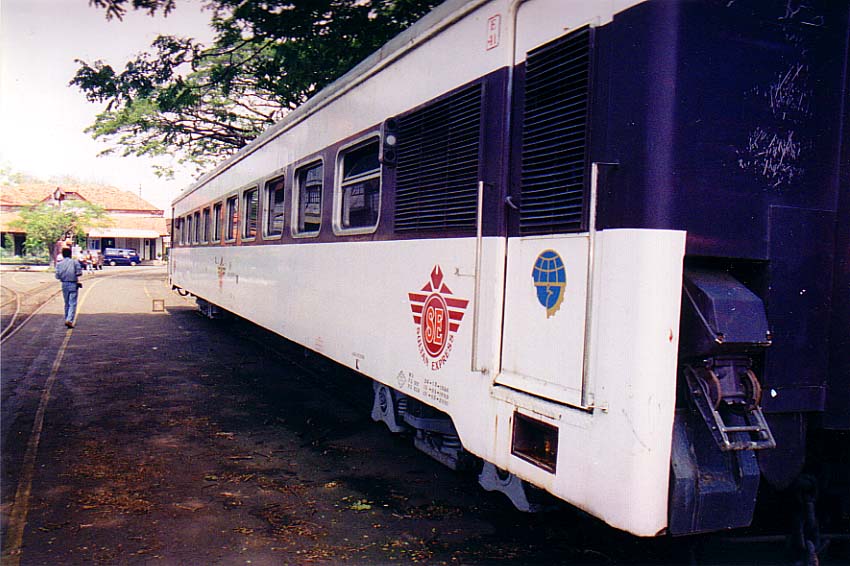 |
Rear view of 'Sultan Express' dining car. The grid window denoting that this section of carriages is used for electrical generator unit. Which is housed at the back of dining car. |
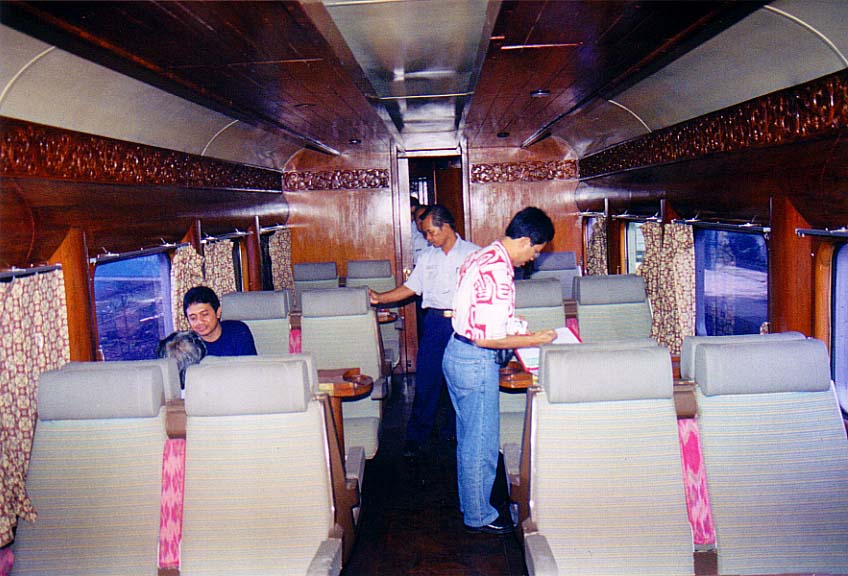 |
The interior view of the dining car. Looks nice, isn't it? The person who wore red-white shirt is Mr. Widoyoko, the chief of Indonesian Railway Preservation Society. |
|
This decreipt looking carriage is not the part 'Sultan Express' train, but it was once used by the Sultan of Madurese kingdom in island of Madura, near Surabaya. Once revered by the Madurese people, this carriage was used by the king to inspect his kingdom during his reign. But when the royal family was dethroned and the railway network in Madura Island dismantled, the carriage was brought to Java island and used, briefly, as guard van before being stored in Sidotopo. |
|
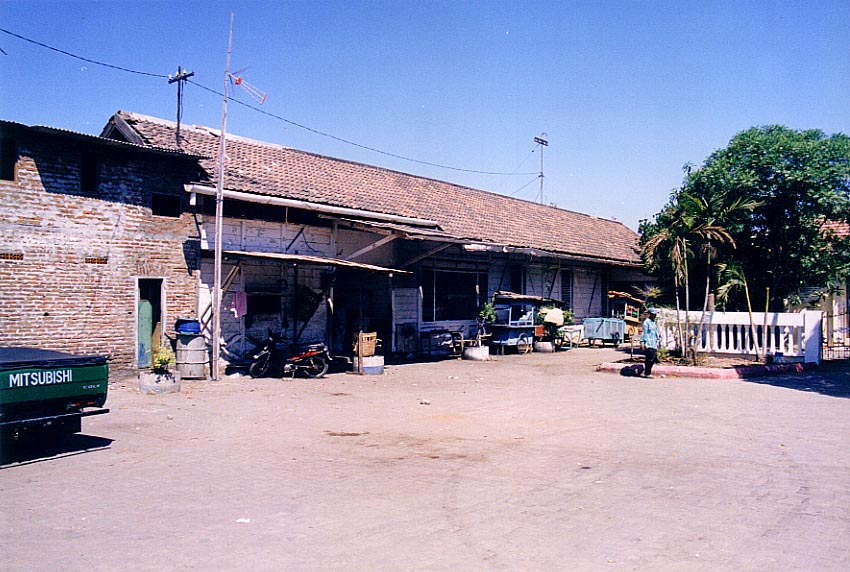 |
This derelict looking building is used to be Gresik Station building. The station has long been abandoned when the traffic declined, and most travellers come and go to Gresik with road vehicles. |
|
The platform of the old Gresik station. It is still crowded, although all of the people are villagers who turned the station into their house. Note: a house has been built above the former rail track. Gresik was once a part of Javanese North Coast line, and this station used to be Gresik's main train station. But when the new rail shortcut was built at the south of Gresik, the line was downgraded into a branchline. And since Gresik is just a small and rather insignificant town, which could be easily accesed by road, it is unlikely that this station would return to its former role. |
|
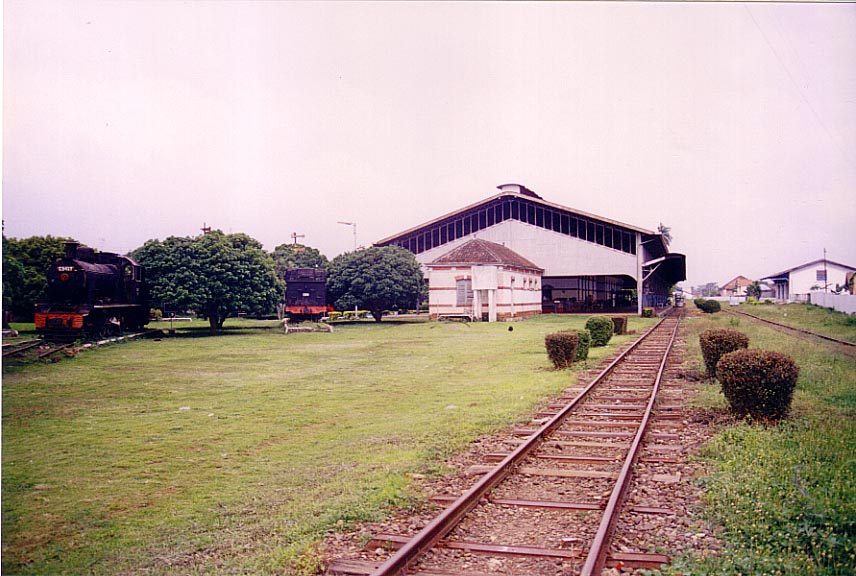 |
Ambarawa Station was used to serve the military outpost deep inside the mountain in Central Java, which nowaday known as Ambarawa. The station itself was once a busy island station, and part of mainline between Semarang and Yogyakarta. Unfortunately, the steep grades to the south of the station and extremely busy road adjacent to the railway line ruled the line inadequate for modern trains, and closed in early 1970s. But the section around Ambarawa was then reopened for tourist traffic. |
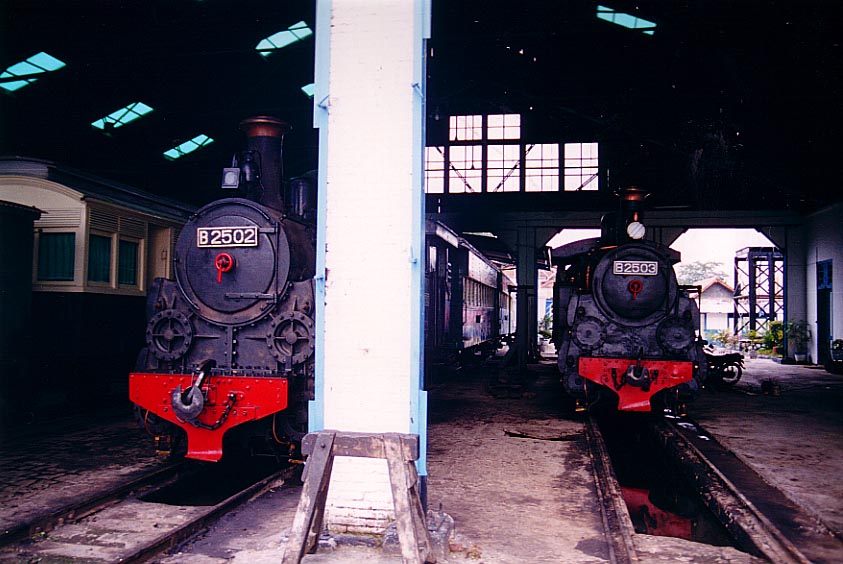 |
Ambarawa locomotive shed is still used for its original purpose: to serve and maintain the rack and other steam locomotives. And everything are still in pristine condition. Including these B25s. |
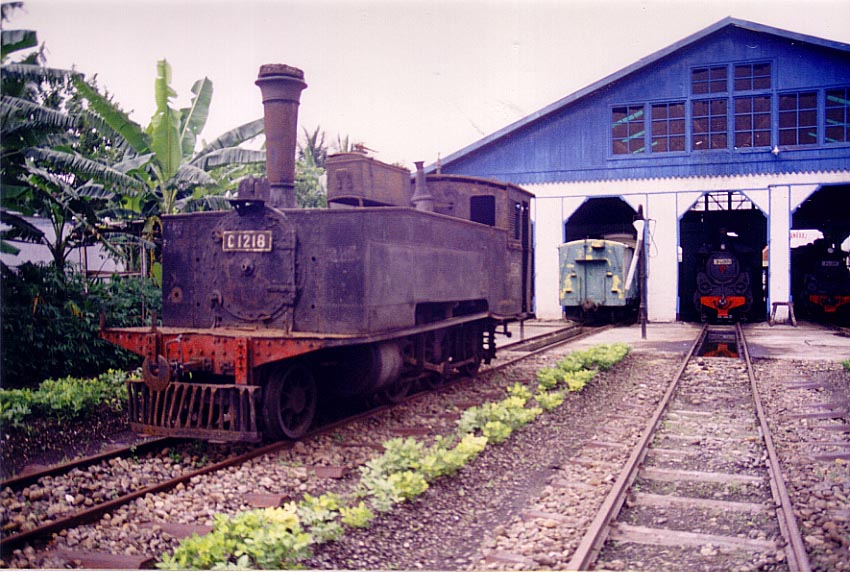 |
Right in front of depot, there are several locomotives which are stored, pending the renovation, including this C12 which was once used for timber mill railway line near Cepu. The C12 was a victim of the traffic decline in Cepu, due to a strong competition with the road, and was fortunate enough to be carried to Ambarawa, to be used for the newly reopened line to Tuntang |
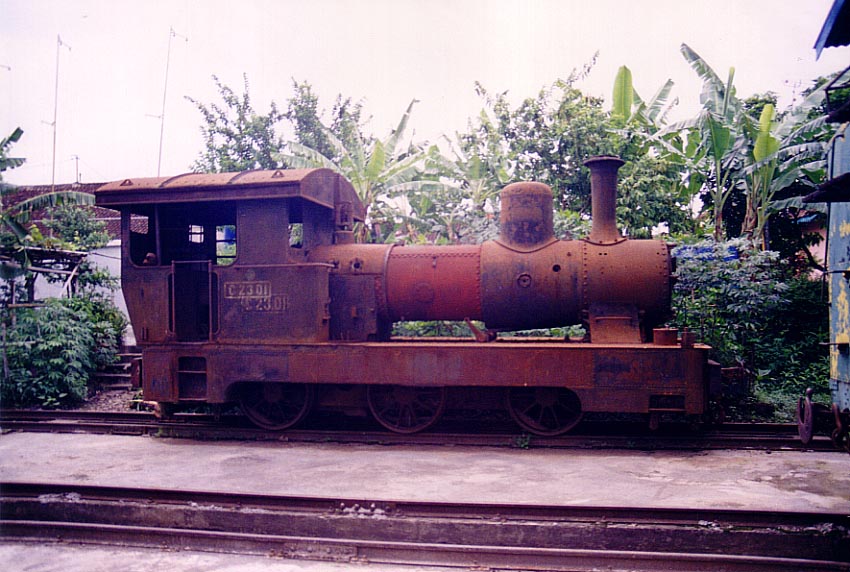 |
C23 class leader, C2301, is seen in derelict condition. But since the loco is placed in Ambarawa, it is unlikely that this loco will ever be scrapped. |
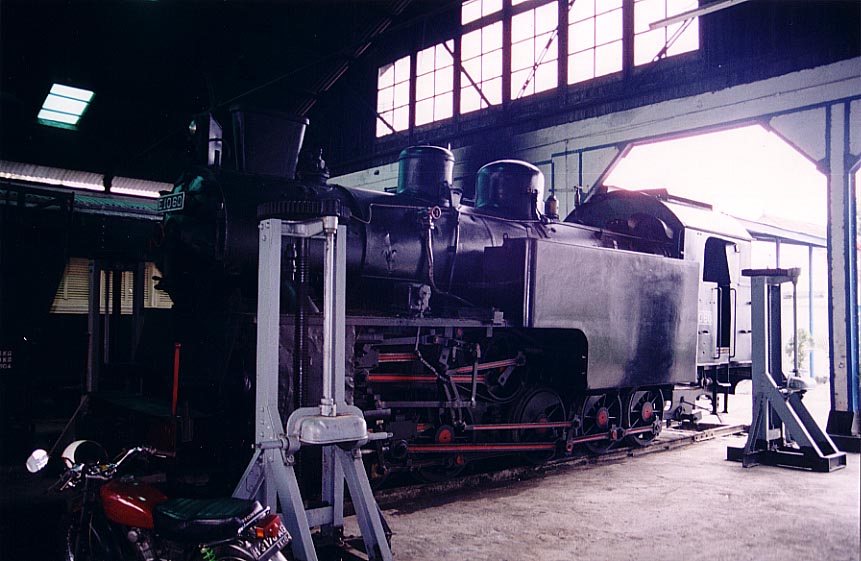 |
Inside the depot, there is an E10 rack locomotive, which was once used in West Sumatra, for coal hauling traffic. When this steam locomotive was withdrawn, it was transferred to Ambarawa, to be used for rack train. In a sad note, the railway line in West Sumatra itself no longer sees any regular traffic, when the coal train service was discontinued in early 2003, due to an unfair competition with the road. |
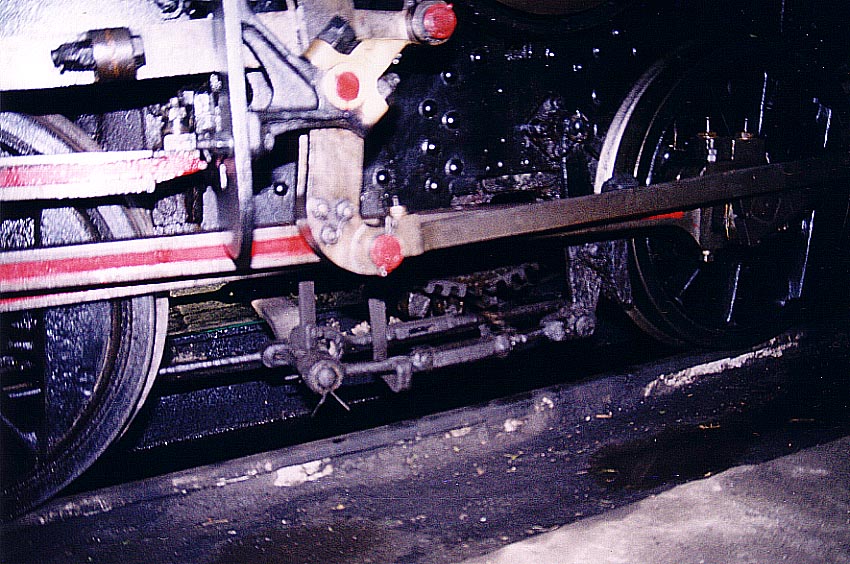 |
The underneath view of E10 locomotive. Note the gears, used for the rack rail in the middle. |
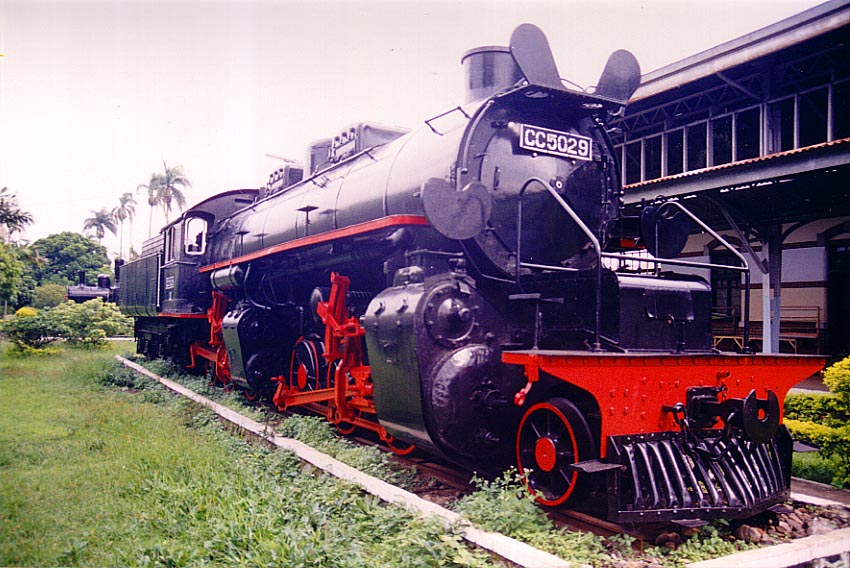 |
CC50 is presently the largest Indonesian Mallet locomotive who remain intact. And three locomotives have been preserved, including one in Netherland. There used to be some larger examples. Like the American (Alco) built DD50 and DD51, and Werkspoor/Hanomag built DD52. Unfortunately, those locos have been scrapped, since there were no active railway preservation movement, as in the present days, in Indonesia. |
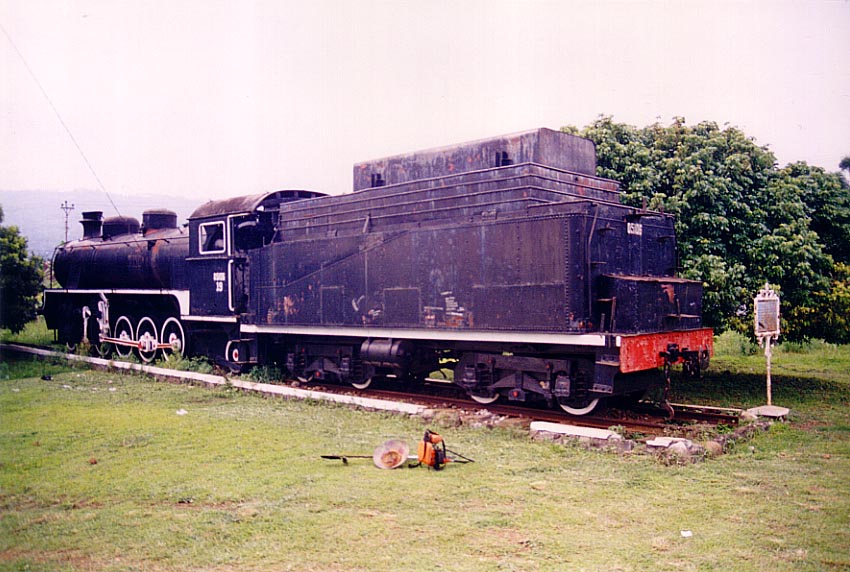 |
The D51 locomotive was ordered from Germany in early 1900s, from a batch of locomotive which supposed to be delivered to Middle East to serve the famous Hedjaz railway network, which was used to carry Muslim Hajj Pilgrims to Medinah (the line never reached Mecca). When First World War broke ou,t and the line demolished by the Lawrence of Arabia, it was decided to convert to loco from 1050mm gauge to 1067mm gauge, and shipped them ti Indonesia intstead. |
|
C12 locomotive was once favoured for branchline working, or station pilot, during its active service. And this once was also used for such purposes. Nowaday this loco is no longer used for those duties. |
|
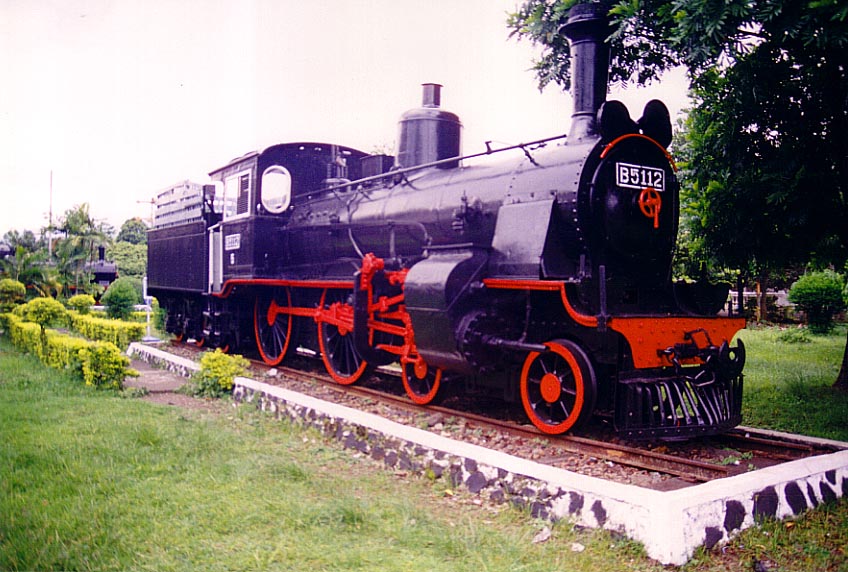 |
The B51 was, perhaps, the most famous Indonesian branchline locomotive in the world. It appeared in several International railway books, especially those who mentioning the stories about the Rangkasbitung-Labuan, or Madiun-Ponorogo line. The B51 themselves were operated at those lines, and one of them did celebrated its 100 years of operational service in mid 1980s. |
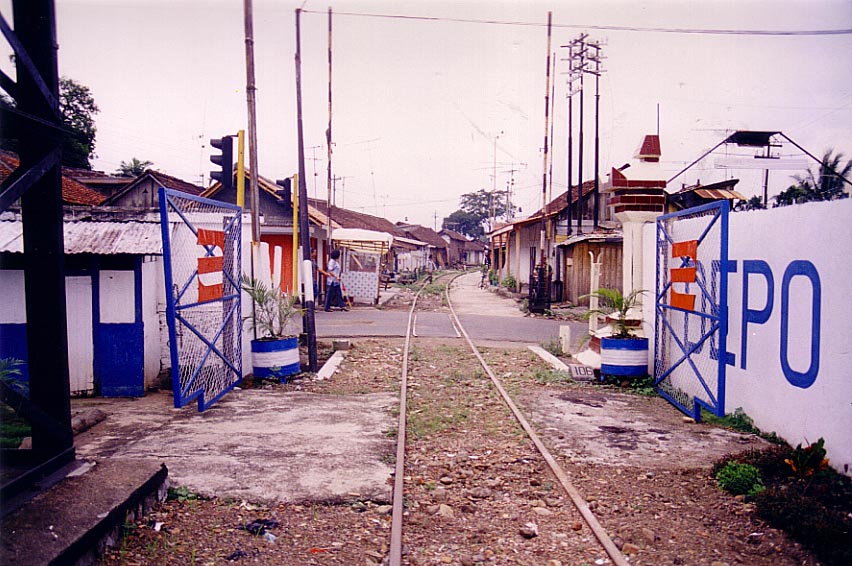 |
This railway line is the newly reopened line from Ambarawa to Tuntang station, located right beside the scenic Rawa Pening lake. The line was reopened in early 2000s to provide an alternative transport for those who wished to go to the lake. A few months before Ambarawa station was reopened for tourist purpose, this line was the only mean to getting in and out of Ambarawa, to the mainline in Semarang. And all of the exhibits were hauled through this line. Unfortunately, the line was closed, until late 1990s. |
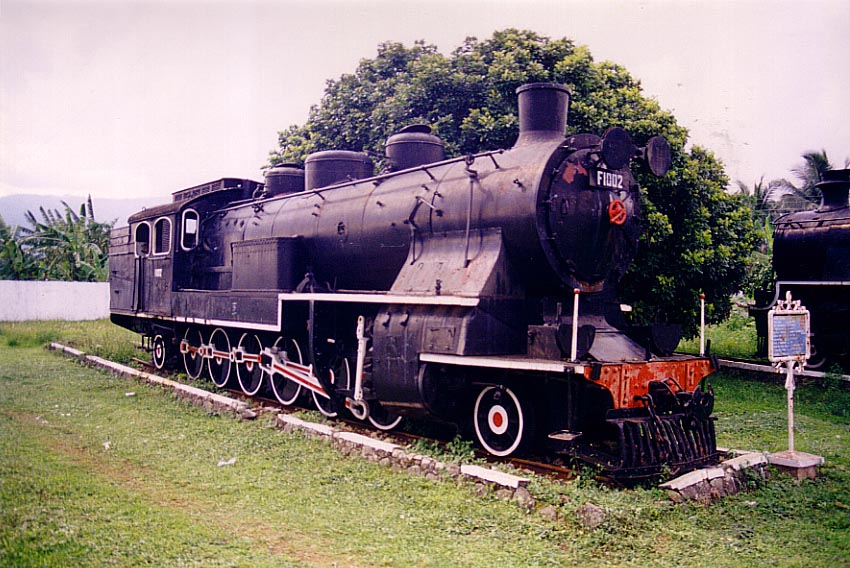 |
This F10 2-12-2T locomotive was used for the heavily graded railway around Malang, in East Java, hence its numerous wheel configuration. Numerous amount of moving wheels were needed to provide the adhesion for the steep line between Bangil and Lawang, which remains as the second steepest (non-rack) railway line in Indonesia today. |